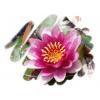| Welcome, Guest |
You have to register before you can post on our site.
|
| Forum Statistics |
» Members: 5,007
» Latest member: Ismaelhib
» Forum threads: 7,742
» Forum posts: 42,070
Full Statistics
|
| Latest Threads |
Very, very nice startup t...
Forum: General questions
Last Post: mrkid
12-18-2025, 04:37 PM
» Replies: 0
» Views: 115
|
Why does HTML/css scale i...
Forum: General questions
Last Post: Tas_mania
12-17-2025, 07:20 PM
» Replies: 1
» Views: 199
|
Path autocurves plugin (G...
Forum: Extending the GIMP
Last Post: InquisitiveAsHell
12-17-2025, 07:40 AM
» Replies: 6
» Views: 663
|
Transparent Background Ad...
Forum: General questions
Last Post: Kramskry
12-16-2025, 08:52 PM
» Replies: 2
» Views: 329
|
Inside drop shadow maybe?...
Forum: General questions
Last Post: denzjos
12-16-2025, 04:45 PM
» Replies: 2
» Views: 252
|
gexport: Make-like tool f...
Forum: Extending the GIMP
Last Post: JohnHammersley
12-16-2025, 03:42 PM
» Replies: 0
» Views: 140
|
Help with colour matching
Forum: General questions
Last Post: denzjos
12-13-2025, 05:05 PM
» Replies: 1
» Views: 252
|
Problem posting an update...
Forum: Gimp-Forum.net
Last Post: Scallact
12-13-2025, 10:29 AM
» Replies: 14
» Views: 813
|
GIMP 3.x Python Plugin Is...
Forum: Scripting questions
Last Post: Ofnuts
12-13-2025, 08:53 AM
» Replies: 1
» Views: 251
|
Gimp larger than Screen
Forum: General questions
Last Post: sallyanne
12-13-2025, 03:53 AM
» Replies: 2
» Views: 283
|
|
|
| copyright |
|
Posted by: Espermaschine - 01-17-2018, 12:04 PM - Forum: Watercooler
- Replies (2)
|
 |
So in light of recent events, i was wondering about copyright and unwanted sharing of images.
Im not gonna slap a watermark on all my images i post on the web or should i ?
There is the advanced option to automatically add a comment in Gimp, but of course that requires people to look there and its a kind of hidden feature.
Also unsure i want to add an email adress to all my images in said comment section.
What about those licenses you see in scripts and stuff ? Does it make any sense ?
|

|
|
| Filter > Blur > Average |
|
Posted by: dinosaur - 01-16-2018, 02:23 PM - Forum: Gimp 2.10
- Replies (3)
|
 |
Does anyone know if Filter > Blur > Average or a filter with equivalent functionality is available in 2.9.8? I had hoped to use it in correcting a pronounced color cast.
Thanks much.
|

|
|
| Numerous malfunctions with 2.8.22 on Ubuntu 16.04 |
|
Posted by: garyartista - 01-16-2018, 12:33 PM - Forum: General questions
- Replies (8)
|
 |
I have an Ubuntu 16.04 box and am using a Wacom tablet CTL 480.
Problems
1) the program sometimes changes color when I am drawing. Mostly it is the second color in the two color rectangles in the toolbox.
2) sometimes the erase function does not work or you get a color from it, the colors coming from the color rectangle in the tool box.
I can fix this temporarily sometimes by closing GIMP, also by deleting devicerc. Sometimes I can fix the problem by disabling the tablet by editing the input devices. disabling if enabled or enable if disabled.
These problems are occurring with maddening frequency. I hate to have to learn another program but these problems making using GIMP very annoying.
Any assistance much appreciated.
|

|
|
| Need help working out correct scaling. |
|
Posted by: TravelingMan - 01-16-2018, 05:23 AM - Forum: General questions
- Replies (2)
|
 |
Hi there. This probably will sound like a real dumb question, but it’s really vexing me.
I want to draw a 2d drawing of my dashboard in my motor home to scale. I want to be able to accurately place circles of the correct size for my instrument gauges so that I can redesign the whole board.
I cannot work out how to correctly scale the drawing canvas, so I can draw a rectangle that will equal the real world size of 550mm wide by 290mm high, and then draw the guages, also to scale.
The other alternative is using a different program. But as I only want 2d, then I thought Gimp was the best.
Hope that makes sense, and someone can assist me.
|

|
|
| Interrupting a long-running script |
|
Posted by: dfkettle - 01-15-2018, 06:42 PM - Forum: Scripting questions
- Replies (6)
|
 |
Sorry if this question has already been answered, but I couldn't find anything relevant. How can I interrupt a long-running script if for some reason I don't want to wait for it to complete? The only way I've found is to go into Task Manager (on Windows) and kill it, which isn't very elegant and leaves the do/undo stack in an invalid state, so I have to exit Gimp and restart it. Is there a way to poll the keyboard, say once every 100 ms., and test for a keypress? Or is there another way?
Thanks.
|

|
|
| Unable to Re-Install GIMP |
|
Posted by: Cryo - 01-15-2018, 03:22 PM - Forum: Windows
- Replies (6)
|
 |
I'm running windows 10 x64, the error message I get reads as follow:
"GIMP 2.8.22 cannot be installed over your currently installed GIMP version, and
the automatic uninstall of old version has failed.
Please remove the previous version of GIMP yourself before installing this version
in C:\Program Files\GIMP 2, or choose a Custom install, and select a
different installation folder.
The Setup will now exit.
Setup cannot continue. Please click Cancel to exit."
I've fully uninstalled my previous version of gimp manually, there are no traces of it anywhere that I can find.
I've tried many different installation folders with custom install and I always get the same message.
Any ideas?
Thanks.
|

|
|
| Major Resynthesizer Problem |
|
Posted by: Kez - 01-15-2018, 06:18 AM - Forum: Windows
- Replies (6)
|
 |
I just downloaded Gimp (and Adobe Bridge) after research and recommendation from a family member, as Picasa is no longer supported and I need to sort and organise about 10,000 photos (including several thousand to be scanned from original photos). I like the idea of the Resynthesizer function to remove unwanted objects, but ...
. Downloaded Resynth plugins, didn't work. Got error message when trying to use it.
. Repeated above, several times, deleting each set of plugins before trying again.
. Read about Script-fu Heal-Selection plugin. Tried that. Worked, but REALLY slow and no variables to adjust like the tutorial I watched.
. Don't know what Python is, but a page I read said the plugin uses it, so I downloaded it, then re-downloaded the Resynth plugins.
. Resynth now shows in Filters>Map, but none of the plugins (especially Heal-Selection) show in Filters>Enhance!
I also tried the clone and brush tools, but when I set the sample area, the + appears only until I move the mouse to start cloning and then the sample circled area moves as I move the mouse, which didn't happen in the tutorial either!
HELLLLLLP. I'm not overly computer literate when it comes to the backend side, but I'm a pretty intelligent person and can usually work my way through. However, after over 5 hours of failure, I'm about ready to pack the lot in and go back to good old, discontinued, Picasa.

PS. I'm using Windows 7
|

|
|
|